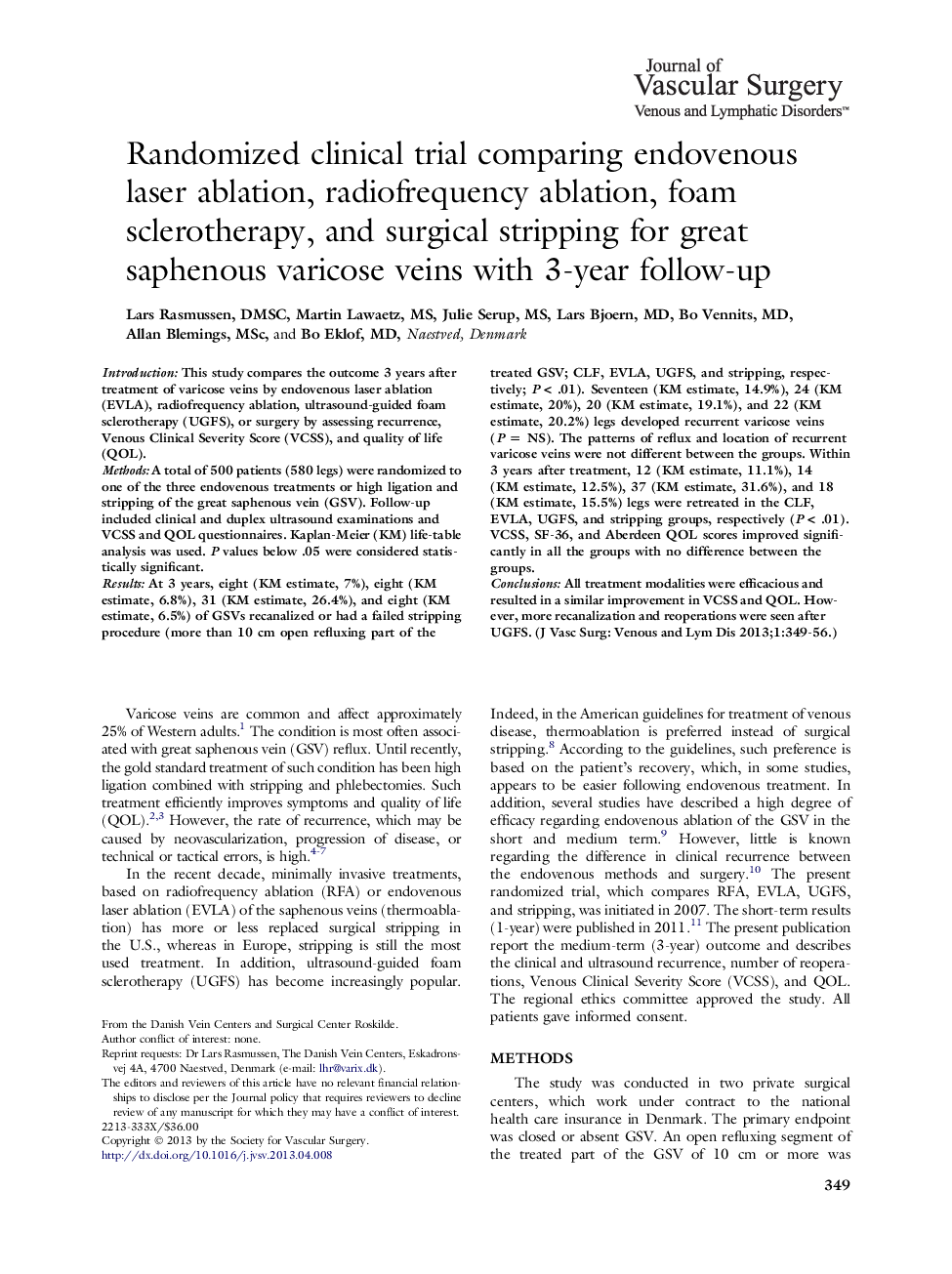| کد مقاله | کد نشریه | سال انتشار | مقاله انگلیسی | نسخه تمام متن |
|---|---|---|---|---|
| 2997936 | 1180214 | 2013 | 8 صفحه PDF | دانلود رایگان |

IntroductionThis study compares the outcome 3 years after treatment of varicose veins by endovenous laser ablation (EVLA), radiofrequency ablation, ultrasound-guided foam sclerotherapy (UGFS), or surgery by assessing recurrence, Venous Clinical Severity Score (VCSS), and quality of life (QOL).MethodsA total of 500 patients (580 legs) were randomized to one of the three endovenous treatments or high ligation and stripping of the great saphenous vein (GSV). Follow-up included clinical and duplex ultrasound examinations and VCSS and QOL questionnaires. Kaplan-Meier (KM) life-table analysis was used. P values below .05 were considered statistically significant.ResultsAt 3 years, eight (KM estimate, 7%), eight (KM estimate, 6.8%), 31 (KM estimate, 26.4%), and eight (KM estimate, 6.5%) of GSVs recanalized or had a failed stripping procedure (more than 10 cm open refluxing part of the treated GSV; CLF, EVLA, UGFS, and stripping, respectively; P < .01). Seventeen (KM estimate, 14.9%), 24 (KM estimate, 20%), 20 (KM estimate, 19.1%), and 22 (KM estimate, 20.2%) legs developed recurrent varicose veins (P = NS). The patterns of reflux and location of recurrent varicose veins were not different between the groups. Within 3 years after treatment, 12 (KM estimate, 11.1%), 14 (KM estimate, 12.5%), 37 (KM estimate, 31.6%), and 18 (KM estimate, 15.5%) legs were retreated in the CLF, EVLA, UGFS, and stripping groups, respectively (P < .01). VCSS, SF-36, and Aberdeen QOL scores improved significantly in all the groups with no difference between the groups.ConclusionsAll treatment modalities were efficacious and resulted in a similar improvement in VCSS and QOL. However, more recanalization and reoperations were seen after UGFS.
Journal: Journal of Vascular Surgery: Venous and Lymphatic Disorders - Volume 1, Issue 4, October 2013, Pages 349–356